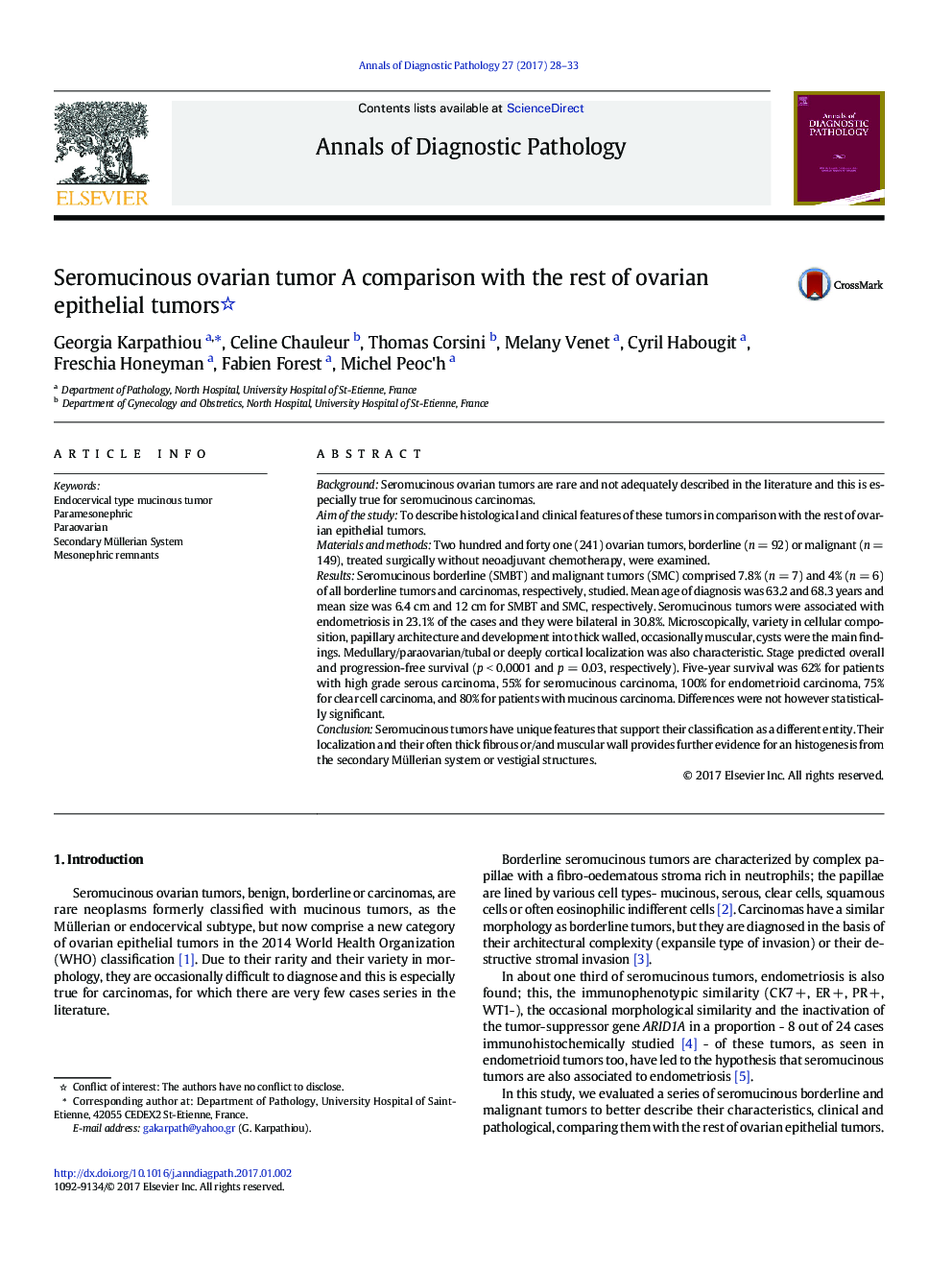| Article ID | Journal | Published Year | Pages | File Type |
|---|---|---|---|---|
| 5715900 | Annals of Diagnostic Pathology | 2017 | 6 Pages |
â¢Seromucinous ovarian tumors are rare and not adequately described.â¢Seromucinous borderline and malignant tumors comprise 7.8% and 4% of ovarian borderline tumors and carcinomas, respectively.â¢Main features: variety in cell types, papillary architecture and development into thick occasionally muscular cysts.â¢Medullary/paraovarian/tubal or deeply cortical localization was also characteristic.
BackgroundSeromucinous ovarian tumors are rare and not adequately described in the literature and this is especially true for seromucinous carcinomas.Aim of the studyTo describe histological and clinical features of these tumors in comparison with the rest of ovarian epithelial tumors.Materials and methodsTwo hundred and forty one (241) ovarian tumors, borderline (n = 92) or malignant (n = 149), treated surgically without neoadjuvant chemotherapy, were examined.ResultsSeromucinous borderline (SMBT) and malignant tumors (SMC) comprised 7.8% (n = 7) and 4% (n = 6) of all borderline tumors and carcinomas, respectively, studied. Mean age of diagnosis was 63.2 and 68.3 years and mean size was 6.4 cm and 12 cm for SMBT and SMC, respectively. Seromucinous tumors were associated with endometriosis in 23.1% of the cases and they were bilateral in 30.8%. Microscopically, variety in cellular composition, papillary architecture and development into thick walled, occasionally muscular, cysts were the main findings. Medullary/paraovarian/tubal or deeply cortical localization was also characteristic. Stage predicted overall and progression-free survival (p < 0.0001 and p = 0.03, respectively). Five-year survival was 62% for patients with high grade serous carcinoma, 55% for seromucinous carcinoma, 100% for endometrioid carcinoma, 75% for clear cell carcinoma, and 80% for patients with mucinous carcinoma. Differences were not however statistically significant.ConclusionSeromucinous tumors have unique features that support their classification as a different entity. Their localization and their often thick fibrous or/and muscular wall provides further evidence for an histogenesis from the secondary Müllerian system or vestigial structures.
